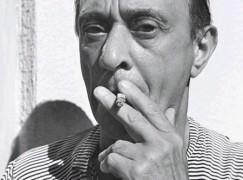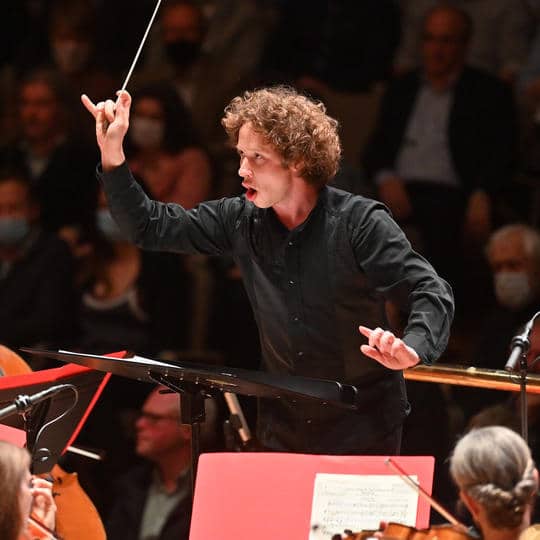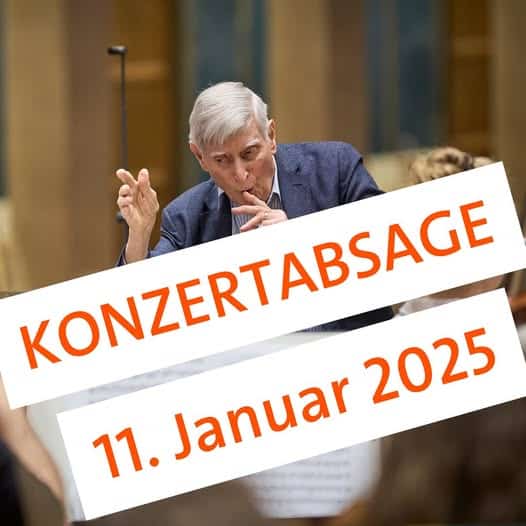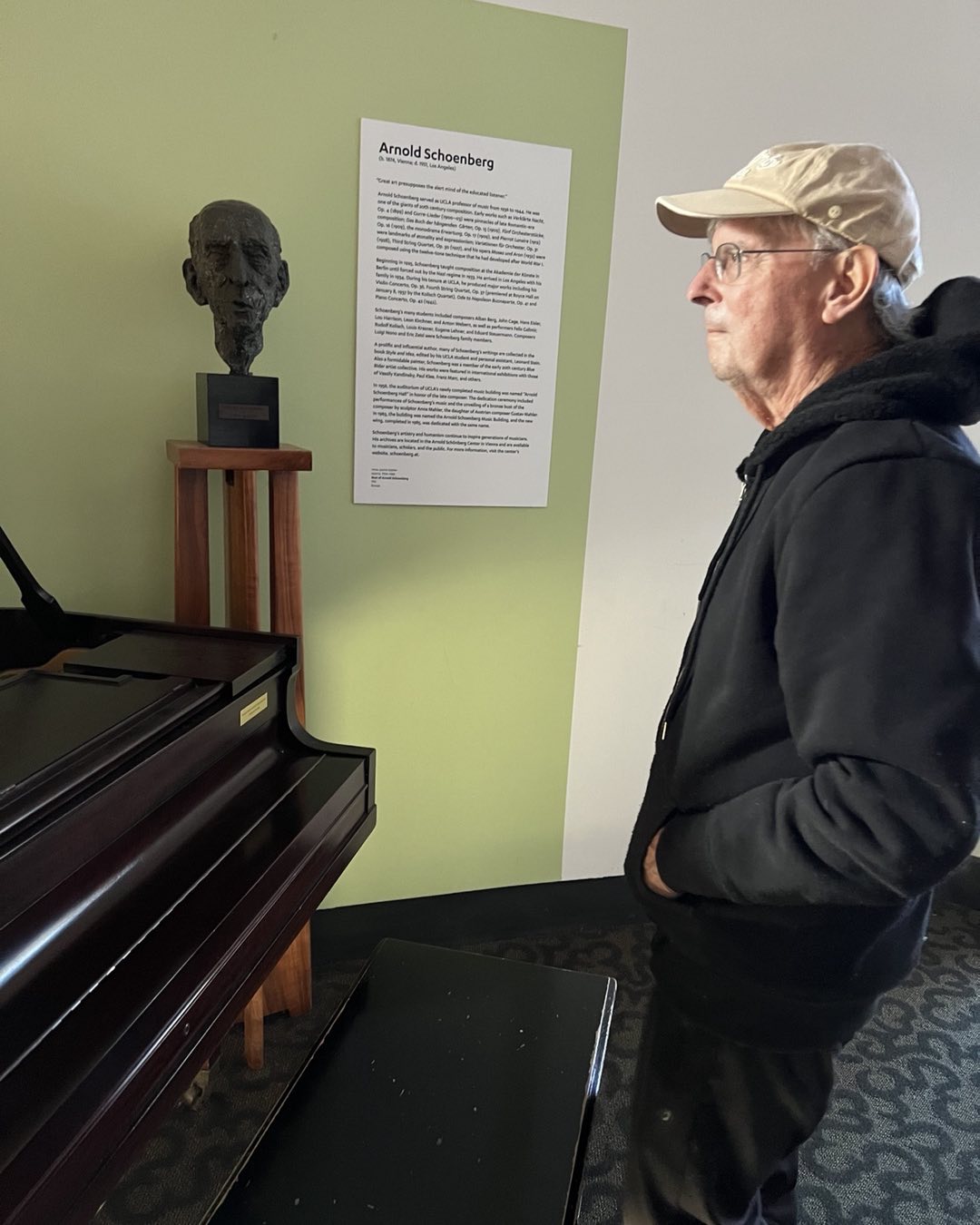Wrong Tchaikovsky ending at the Berlin Philharmonic?
mainSlipped Disc reader Andrew Condon was enjoying a concert last night when...
I was watching last night’s Berlin Philharmonic concert on their excellent Digital Concert Hall. Hilary Hahn splendid in Vieuxtemps no 4 and then the Tchaikovsky Manfred Symphony after the interval.
You could tell that the orchestra were having a wonderful time with this great music that they probably have not played that often. One of my favourite pieces.
Imagine my disquiet when instead of the final reflective section with organ, ending pianissimo, the conductor repeats the end of the first movement, so that the whole symphony can end with a spectacular flourish (i.e very much NOT what the great man wrote). Have never heard such butchery to a relatively standard repertoire piece before. The audience needless to say loved it and applauded wildly! The guilty party was Mr Tugan Sokhiev.
Cuts are one thing (e.g. the standard optional cuts in the finale of the Tchaikovsky violin concerto, a cut in the 3rd movement of Rimsky Scheherazade – I think started by Stokowski, but no longer acceptable now) but to cut AND paste as Mr Sokhiev did seems a step too far.






He’s not the only Russian conductor to do this – Temirkanov, among others, does the same. Like the cuts in Rachmaninov’s Second Symphony, it’s an abomination. Both works are magnificent as their composers originally intended.
I believe Svetlanov also recorded Manfred with this vandalised ending (a later recording than the one he made in the 1960s on Melodiya). More recently Jaap van Zweden has also perpetrated this piece of editorial butchery with the Chicago SO. Poor Tchaikovsky: some conductors are obviously still unwilling to take him at his word…………
Indeed there was a loud ending – there were more cuts in the 2nd, 3rd and 4th movement. Did you realise these?
And then there’s the vandalised Rococo Variations; the most frequently performed version. Given the various ‘improvements’ made to Mussorgsky, Borodin, etc. it might be a Russian kind of thing.!
The “standard” version of the Variations is the work of the cellist Fitzenhagen. Tchaikowsky bitched about these changes to Arensky but to no avail. HOWEVER, there is a wonderful recording on Chandos of the Original Version is a revelation to anyone who wants to take the time and listen to it. The cellist is Wallfisch who also made a wonderful recording of the Dvorak Concerto. It also has the Konzert-stuck to Ernö von Dohnanyi(sp).
In the Philadelphia Orchestra Library one can find a score of the Rachmaninoff 2nd with cuts sanctioned by the composer himself. This is the version first recorded by Eugene Ormandy.
Yes, but Rachmaninoff also stated that when he conducts the 2nd he will do it without cuts. Is the symphony stronger with the cuts? Maybe it is, but if Rach decided the cuts were good he would have published a new edition – he didn’t, so play the symphony as is. We can thank Andre Previn for pushing almost every recording for the past 40 years for being complete.
It’s usually not up to the composer what gets published. Even now, with the ease of computer typsetting (as compared to hand engraving), composers often find it difficult to get a publisher to publish a revised version of their work. Stravinsky’s Rite of Spring is a well-documented example of a publisher telling a composer that they were “too late” with changes, and any further changes will not be implemented. Just because there’s no published edition with the changes that may have been made or sanctioned by a composer doesn’t automatically negate those changes as a composer’s final wishes.
You wouldn’t be the Tito Muniz coming to Phoenix? If so, boy, are we looking forward to you! We haven’t heard Manfred in many years (and it was cut) and there’s a real drought of Mahler – seriously.
To answer you question “is the symphony stronger with the cuts?,” I say emphatically, YES. I hear the uncut version as extra unnecessary verbiage (I’ve played both). Is the Tchaikovsky Violin Concerto better with the Auer cuts and octave higher measures? Again, I say, YES and for the same reason. The extra measures in the 3rd movement sound like a tonearm stuck in LP grooves.
While I agree that some of Auer’s “improvements” in the Tchaikovsky’s Violin Concerto are indeed attractive, I find his cuts in the Finale very unnecessary. These cuts make the pacing of the movement smooth and regular in a rather boring way, and I think that Tchaikovsky wanted deliberately to make it noticeably irregular, which is why he wrote seemingly excessive repetitions not only in the main theme but also in the two slow episodes as well as in the short cadenza before the last return of the main subject (and even added an extra short repeat in the coda). The “stuck needle” effect fits well with this interpretation of his concept. The “drunken” character of the second subject makes good sense when understood that way.
In this instance, one could argue that the only cut sanctioned by the composer is the 1st movement’s big exposition repeat, simply because Rachmaninoff didn’t write the whole thing out again in the score.
The old Albert E. Wier set of miniature scores (Bonanza books) published the then-standard abridged version of Rach 2. But I’ve never heard a TRULY complete version of the symphony. Even the versions that are nominally complete and that run an hour or so never take the marked 1st movement expo repeat. Is there one?
Shock, horror, call the fun police! Somebody arranged a piece of music in a way that appealed to an audience! What on earth is happening to the marble busts of our music gods in the sacred halls of Valhalla?
But doesn’t every performance need to have a noisy ending to have any success in Brisbane?
Had this happen to me in the same way at the RFH in the early 1980s. Temirkanov the villain. RPO player told me afterwards it was the Leningrad Ending, and it consists of a reprise of the end of the first movement instead of the organ section. This entailed a good deal of panicky page turning in the orchestra. An abomination of course, as bad as Toscanini’s hatchet job on Manfred, from the man so very concerned about delivering to the listener exactly what the composer wrote.
I think Tchaikovsky did it good the first time .If it´s an arrangement the audience deserves to know it . Then I guess it´s right to re write the ending of Othello, Don Quixote or Crime & Punishment for the MTV audience
Best First World Problem!
In the early 1960s, I heard my first of many musically revealing concerts conducted by the masterful William Steinberg. He was a guest with the Philadelphia Orchestra, and the major work was Tchaikovsky’s Manfred, a piece I was hearing for the first time. I loved everything about it, especially the dramatic ending, a reprise of the end of the first movement. A recording I made of the FM broadcast of that concert became one of my most-played tapes, and Steinberg a favorite conductor (still is). Though I had scores of Tchaikovsky symphonies, Manfred was still rare enough that I had no score, and for many years had heard no other performances, live it recorded. What a shock it was, years later, to hear the ending on Previn’s recording! Organ? Dies Irae? Woodwind quote from Romeo and Juliet? What was this? From that point, through these many years until this very discussion, I have assumed that Philadelphia Orchestra Manfred ended the way it did in order to avoid setting up the problematic “portable” pipe organ in the Academy of Music. Ormandy often left the organ out of pieces. Respighi’s Rome Trilogy, Church Windows, and Bruckner Te Deum spring to mind. Now I have read postings that there is a Russian “tradition” of this “alternate” demise of Manfred. I welcome reading more light-shedding on this subject, especially what possible connection William Steinberg would have had to this Russian tradition over 50 years ago?
I despise cuts/edits/re-orchestrations etc. If you can’t play it the way the man wrote it, then either don’t do it at all or at least add a note in the program “arr. By T Sohkiev”. Would this audience have approved a flashier ending to the Brahms 3rd, cutting each movement of the Beethoven 9th? No. Having heard some of Sohkiev’s recordings I had hope for him as a young, exciting conductor but now I fear he likes to demolish the work of others. Too bad.
Temirkanov cut some in the middle of Francheska Da Rimini – so Mravinsky did
There’s a Stokie/Lewisohn Stadium (NY Phil) recording of Francesca da Rimini played with certain redundancies cut out, as well.
How was the concert?
It is the version Jewgenii Svetlanov used.I think it has a lot going for it,Tchaikovsky himself was dissatisfied with the rather pale and conventional ending.What is more important is,that Svetlanov(especially on his live recording with the Berlin Philharmonic) and Temirkanov did the best,truly white hot readings of the score.
And how I like the added tam-tam strokes both apply to this ending(and also at the end of the first mvt.).Toscanini was the first to do that,and he almost reorchestrated large chunks,but to what galvanizing effect!!!Sadly,nowadays we live in a time when
historical “correctness”is valued often higher than flamboyant,larger than life music making.Give me Svetlanov´s,Toscanini´s or Temirkanov´s Manfred.or Stokowski´s Romeo and Juliet(a far crasser ending!) anyday for a boring,standardized middle of the road performance which follows the letters but doesn´t convey anything of the spirit of the score!
I forgot one thing to mention.I like the additions,alterations,and instrumentation changes,but I´m not so sure about the cut in the 4th mvt Svetlanov,Temirkanov,
Rozhdestvensky,Toscanini and many others do.But that doesn´t spoil their performances for me.
Bravo. My sentiments exactly. Thank You
Dear Mr.Young,is it possible to get a copy of the Steinberg performance?I would die to hear that one.Steinberg was a fantastic,sadly underrated conductor.
Dear Harold,
Unfortunately all of my old reel to reel tapes are long gone. The Philly Orch must still have it in the archives. Perhaps it will surface one day. Some old concert performances did surface for a while on the Andante website, thoughi do not remember any with Steinberg. He was an excellent, exciting conductor. One need only listen to his Zarathustra with the Boston SO to realize what had been missing during the Leinsdorf years. The vitality and spontaneity of the BSO Munch years had returned, sadly for just three years of Steinberg’s “musical advisorship”.
here it is:
http://www.worldcat.org/title/transcription-of-wfln-radio-broadcast-1963-october-25/oclc/155865912
This was Svetlanov’s edition. A number of major conductors use it. It is not exactly news, or shocking…
“Arrangement” please. A cut and paste job like this is hardly an “edition”.
That is actually a very good point. In fact, “rearrangement” may be even closer to the truth.
It seems there is a certain tradition among russian interpreters (I don’t know if it is of Soviet origin or not) about doing these things. I can remember, a long time ago, a Madrid concert, with Temirkanov and Leningrad Philharmonic, with these same cuts in Manfred, and the substitution of the Finale ending. I knew the work through the tremendous recordings by Maazel and Markevich, and the result seemed highly disappointing. to me. So disappointing, at least as the recording of the “Mariinsky version of “Swan Lake”, by Gergiev.
I can not find justification for these cuts and exchanges of sections, apart from a “provincial” tradition (from St. Petersburg !!!!), but I don´t think it’s a problem only of Russians. Many may remember the stunning recordings (splendidly performed, incidentally) of Bartok’s Concerto for Orchestra by Szell, or Bruckner’s Eighth by Klemperer!!.
Poor Pyotr Ilyich. Stokowski always lopped off the last four bars of the Romeo Overture to give it a more romantic, Hollywood ending. He claimed Modeste told him that really what the composer wanted but I don’t believe it. It sounds smarmily maudlin the way Stokie did it. Of course, Toscanini made the big fourth movement cut in Manfred but at least he championed it otherwise complete. Bernstein called the piece trash and refused to do it.
I would like to add a couple of points to this discussion.
Please don’t call the “copy and paste” fragment of the first movement for the Finale as “Russian tradition”! There are many great Russian conductors who never did this, such as Pletnev, Simonov, Mravinsky and Rozhdestvensky, or V. Jurowski, V. Petrenko from the younger generation.
Based on statements by G. Rozhdestvensky, this (utterly) barbaric action roots in the practice of the less known conductor Abram Stasevich, and was followed by Svetlanov, Fedoseev, and a few others. By the way, there is a recording with Temirkanov (presumably with the LSO) with a traditional ending, so he did actually record its original version, even if performed it In concert sometimes with a “loud ending”.
Manfred is not a usual symphony, and this is why Tchaikovsky never included this piece to the list of his symphonies. It’s rather a huge programmatic symphonic poem telling a story. The death of Manfred is a sort of transfiguration supported by the sound of organ (about it -later) as a sign of forgiveness, sound Of God’s Love. The practice of removing this part of music, and replacing it with a coda from the first movement is not only a “musical crime”, but in my opinion a sort of ignorance, musical blindness. It is a little bit like finishing Symphonie Fantastique with the fragment from Reveries .Each story (and Manfred IS the story) has a beginning and an end.
And another observation. The premiere of Manfred took place in Moscow, at 11 March 1886. The question is: Where? The answer: At the “Blagorodnoe sobranie” (i.e. “Gathering/Meeting of the Nobility”, today’s House of Unions ); the hall which has been built in the first half of the 18th century, and has NO concert organ at all!
Tchaikovsky definitely knew about this, and maybe this is why he is not requesting an “organ” in the score, but a Harmonium (pump organ) instead. The question is whether the Harmonium is meant to replace an organ, or whenther an organ (for future performances) should rather imitate the sound of a pump organ.
We should remember the context of Manfred’s death. The sound of small church organ fits much better to this context, than the sound of a huge concert organ. And last but not least – there was no single concert organ in Moscow at the time when Tchaikovsky composed “Manfred”, but as we know he went to Switzerland in his search for inspiration, and it is very likely that the sound of a small organ church in Swiss mountains remained in his memory.
If we could accept this theory, conductors should use the Pump organ for performances of the original version of Manfred’s Finale or – since it is nearly impossible to find this instrument in perfect shape and allowing for being tuned to A442 – to orchestrate theconcertorgan very modestly.
At this time I don’t have access to the recording, so I can’t check, but I remember that in Markevich’s version (Philips, with LSO), the organ part at the Finale is arranged for woodwinds.
Can I humbly refer you to this? http://drmarcsblog.marcrochester.com/2016/10/manfreds-misplaced-organ.html
Thaks for your interessant and well-informed commentary! I suspected that it was a “Sovietic” tradition. Now, I wonder if the two or three other “cuts” (no “paste”) on the same final movement are also part of this “oficial” versión of these times. I can remeber sharply that the cuts in the Sokhiev’s performance are exactly the same as in the Termirkanov’s in the Madrid concert 20 years ago.
In what refers to the organ, both editions I have checked in IMSLP calls for “Harmonium” in the final pages of the score. One of them states “Harmonium (Organ)”. And, remebering the case of the Markevitch’s recording, the score reflects that these phrases are orchestated for Harmonium, woodwinds and horns: so, if you remove the Harmonum, you only have the woodwinds and the horns.
Would you please recall me what exactly did Szell with Concerto for orchestra? I do not have this recording at the moment available.
And now I have just heard another favourite work ruined by a conductor who should have known better. Just listened to the finale on grooveshark.com. Szell does a cut from bar 426 to 555, thus getting rid of all the spooky “night-music” section. Unbelievable – Sir Georg S would not be impressed!
I think I read somewhere that Szell justifies this cut saying that Bartók himself had authorized him.
A few years ago, Vassily Sinaiski conducted the CBSO in a wonderful performance of Rachmaninoff’s 2nd Symphony.
After the concert I asked him if he would sign my score & when he did that I thanked him for do the uncut version.
He reaction was remarkable – ‘Who does the cuts nowadays’ I said the last two Russian conductors I had heard – Temikanov & Gergiev.
Well they are lazy Russians & they do not have enough respect for their own country’s music he snapped back!
What more can one say
I have to disagree, fellas. Tchaikovsky’s original ending is a turgid bore and an anticlimax. Furthermore, it is a cop-out and betrayal of both Manfred’s and Tchaikovsky’s world view, an attempt to salvage something redemptive from this barbaric tale. I am unconvinced, Mr Lebrecht, every time I hear those organ chords. I heard the ‘scandalous’ ending when Temirkanov (or was it Gerghiev?) conducted it at the Festival Hall in 94/95, and it was electrifying. There is no release from torment of this kind, except in death, and the first movement coda captures that best.
As a big Tchaikovsky fan, I found the Manfred Symphony to be the perfect combination of Tchaikovsky as a symphonist and Tchaikovsky as a creator of music dramas (ballet/opera). I can understand how this “dramatic symphony”, in the manner of Rimsky-Korsakov’s Scheherazade, is not considered a real symphony and is more of a multi-movement tone poem. The drama takes precedence over textbook symphonic structure.
I have a very good Ricardo Muti/Philharmonia Orchestra recording of Manfred. I have read the score I got from the library and was pleased with how meticulously the recording matched the score. The quiet ending was played as Tchaikovsky wrote it, and that is how it should be played.
When I got to hear a performance on a radio show of this rarely programmed piece, conducted by Robert Trevino with the NDR Radio Philharmonic Orchestra, I was excited because it had been nearly twenty years since the last time I heard the piece on the radio. I found a score online and read along as the musicians performed. Imagine my shock and disbelief toward the end of the finale as the musicians took an “unauthorized” U-turn to reprise the coda of the first movement, totally dodging the organ climax and chorale leading to the beautiful quiet ending. I was left with a feeling of “What the h—!” My experience was utterly ruined! These are the types of things that warrant “trigger warnings” by radio announcers. I looked forward to the serene ending after the sinister chaos of the finale and was deprived of it.
So here is another piece of great music that is subjected to the indignity of overzealous conductors taking liberties with composers’ creations. Why do they do this? It’s one thing for conductors to edit a few notes for clarification of musical lines, but there is no excuse for such extreme and wanton butchery as changing the ending of a piece. Rarely programmed pieces like this should be played as is out of respect for the composer’s intentions. The listening audience deserves to know up front if a piece had been heavily “doctored”; otherwise, the audience would not know that what it heard was not fully authentic, and that is not consistent with artistic integrity on the part of conductors.